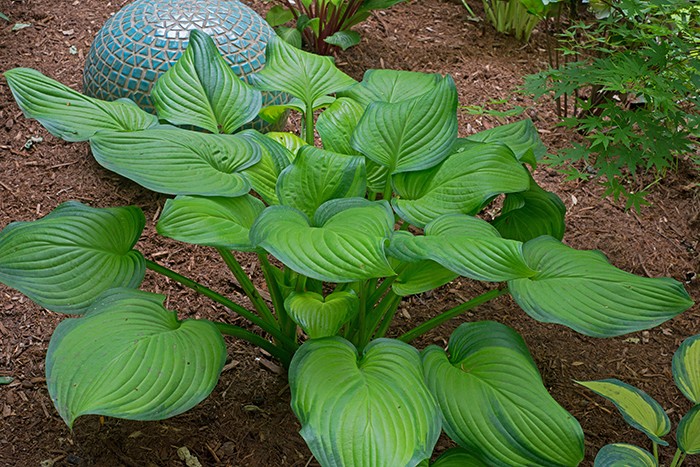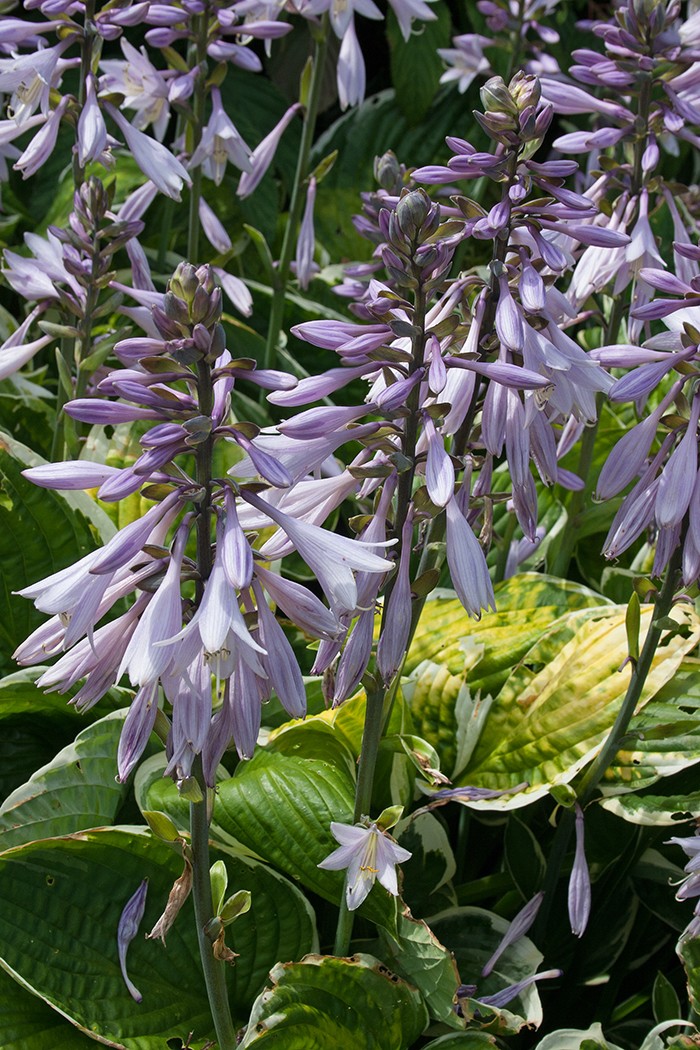When there is a need for foliage plants with visual elegance to doll up semi-shady spots in the landscape, gardeners often turn to hostas. They are durable summertime performers that can be counted on for lasting visual interest with their various textures and subtle hues.
However, starting in August, something weird happens. Some hostas seem to want even more attention, so they stretch long stalks above their foliage and begin to flower. And not only are these blooms welcome sights for eager eyes in the perennial shade garden that typically goes into a flowerless funk during the high heat of a scorching summer, but the nose knows of their presence as well because they are also fragrant.
Wait… hostas that bloom in the late summer? And they’re fragrant? Welcome to the nifty niche of hostas often called, appropriately, August lilies.
I’m not breaking any new ground here. These so-called August lilies are old-school hostas. They first originated in southern China and migrated to America in the early 1800s. Botanically tagged as Hosta plantaginea, it was an instant hit in the Southeast due to its heat tolerance and ability to cast a scented spell in gardens on the warm afternoons of waning summers.
As with many plants that become popular with gardeners, H. plantaginea has been tinkered with by horticultural breeders looking for improvements, but mutated and hybridized forms still mainly retain the good ol’ August lily trait of late-blooming, scented flowers. White is the typical color of these bell-shaped beauties, but some are infused with light purple hues.
Although many variations have been created, today there are only about two dozen selections of August lilies generally available to the gardening public, but this doesn’t necessarily make them hard to find. Heck, I bought ‘Royal Standard,’ which has been around for ages, from a big-box home improvement store.

Guacamole Hosta
Newer August lily selections can be found with minimal searching, and include ‘Guacamole’ with its sassy avocado-colored leaves, ‘So Sweet’ that shimmers in shades of cream and green, and ‘Sugar Babe;’ a minute, variegated hosta with maximum nose appeal from its scented, purple-streaked blossoms.
Online hunting will find plenty of fragrant hostas for sale, of course, but try local garden centers first, as our area nurseries know well of the dreamy eye and olfactory appeal of these enchanting August lilies.
Want to share an August lily with friends or spread its beauty about your landscape? Propagating by plant divisions is the way to go, and it is best to do the deed either in late summer or early spring.
To divide an August lily or any other hosta, dig up the clump and, using a sharp blade, cut it into sections, making sure each slice has plenty of roots and leaves. Replant as soon as possible and water the divided hostas regularly while they are becoming established if rains don’t oblige.
Hostas will provide larger divisions (meaning faster establishing transplants) if you leave the original momma plants undisturbed for three to four years.
To Do in the Garden
August
- Pick indeterminate tomatoes, okra, green beans, cucumbers and squash at least once a week to encourage even more production and help extend the harvest of your veggie patch into the fall.
- Sure, it’s hot, but the winter vegetable garden starts this month. Begin planting the seeds of such cool-season favorites as spinach, radishes, mustard, collards and lettuce.
- While cool-season lawns are taking a break from the heat, warm-season grasses such as centipede, bermuda and zoysia continue to grow, so mow you must. For a healthier lawn, change the direction of your mower’s cutting pattern each week to alter the “fluff” of the grass, which will expose different sides of the grass blades to the sun’s energizing light.
- If the flower power of your bearded iris bed has started to wane, it has probably become overcrowded. Divide irises now by carefully digging up the rhizomes, snipping the leaves to about six inches high and replanting at least a foot apart.
- Tomay-to, Tomah-to
- Pimiento Tea Room
- Hank’s Downtown Dive
- Small Business Spotlight: Craft Beer Cellar Cary
- On Trend: Macarons from Asali Desserts & Café
- Liquid Assets: Loaded Bloody Mary from Scratch Kitchen & Taproom
- Cheese Please!
- Liquid Assets: Cloudstoberfest from Clouds Brewing
- Sounds of Summer
- Notable Teens: Student Success Stories
- Things to Do: August 2021
- Nonprofit Spotlight: Hope Connection International
- Garden Adventurer: August Lilies







